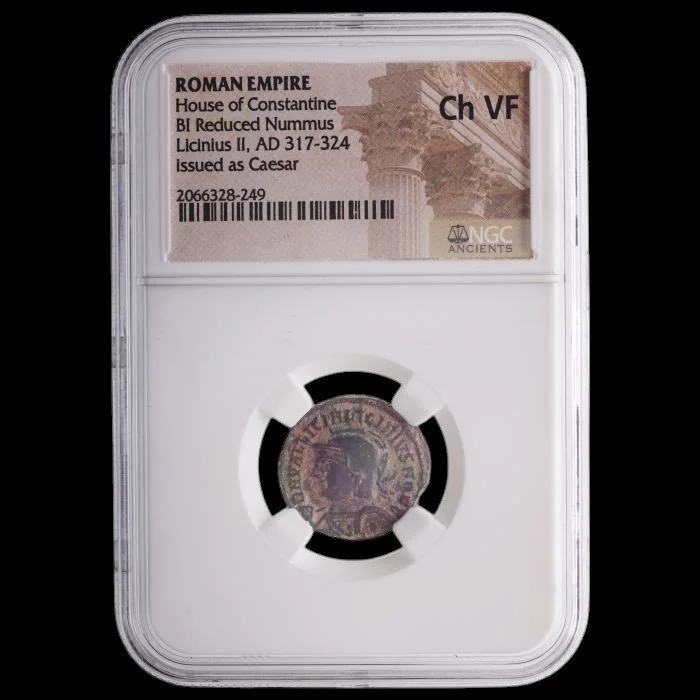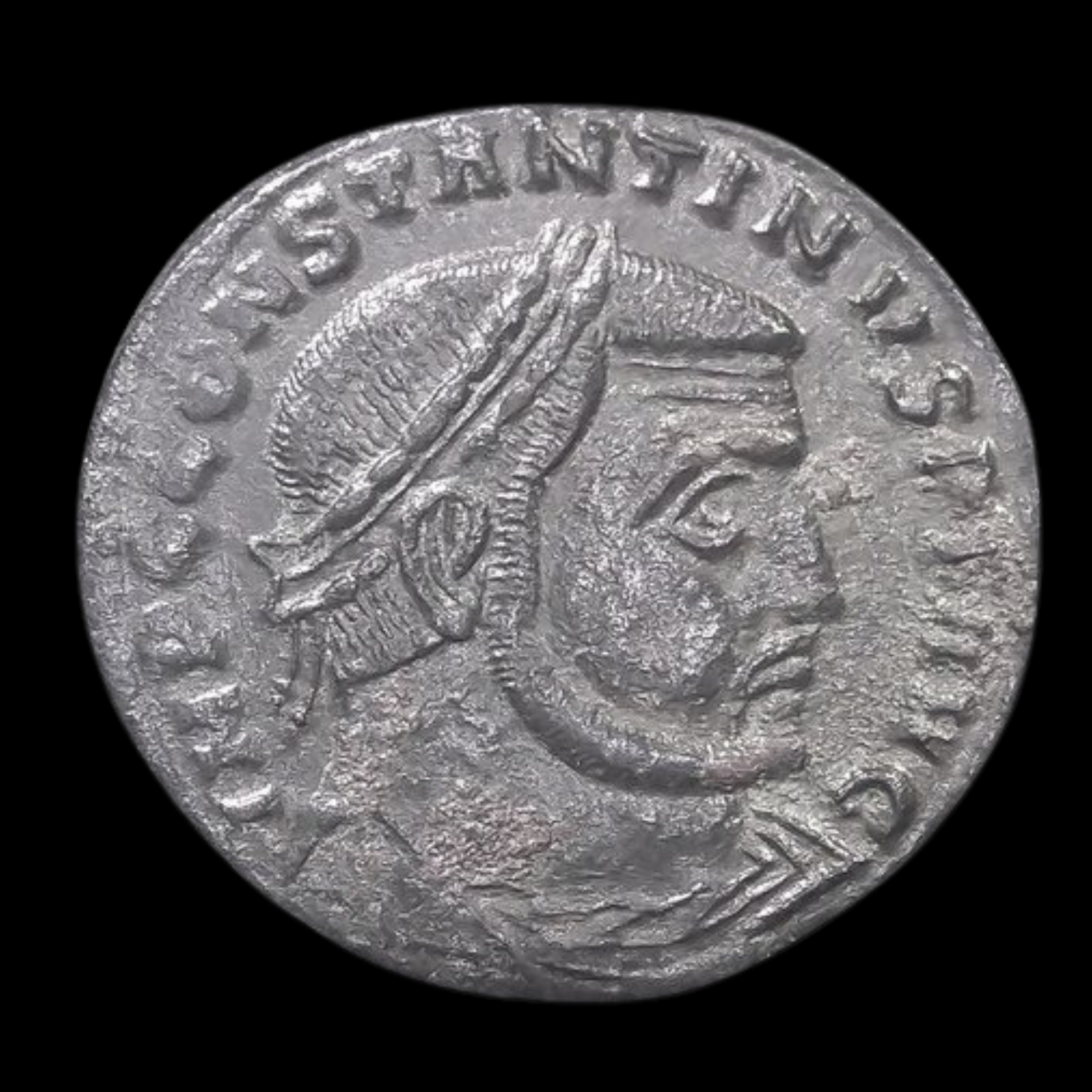 Image 1 of 7
Image 1 of 7

 Image 2 of 7
Image 2 of 7

 Image 3 of 7
Image 3 of 7

 Image 4 of 7
Image 4 of 7

 Image 5 of 7
Image 5 of 7

 Image 6 of 7
Image 6 of 7

 Image 7 of 7
Image 7 of 7








Roman AE Coin of Licinius II (about 1,701-1,708 years ago)
The coins shown are representative examples of the grade and type, but not the actual specimens for sale. For details on NGC’s grading standards and definitions, please refer to our NGC Grading page.
This bronze coin was issued in the name of Licinius II (also known as Licinius the Younger), who served as Caesar (junior emperor) during a pivotal transitional period in Roman history. The coin represents the complex political alliances and succession planning of the early 4th century as the Roman Empire was evolving toward a divided administration and the rise of Christianity.
Coin Description:
Front side: Portrait of the young Licinius II, probably depicted with a laureate head or radiate crown, with his name and titles in Latin
Back side: Likely features imagery associated with imperial virtues, military themes, or religious symbolism common during this transitional period
Technical Details:
Bronze composition (AE stands for "Aes" meaning bronze in Latin)
Late Roman imperial denomination
NGC certified (Numismatic Guaranty Company authentication)
Minted between 317-324 CE
Condition as noted in NGC slab
Historical Significance:
Licinius II occupied a unique position in Roman imperial politics due to his family connections. As the son of Eastern Emperor Licinius I and Constantia (half-sister of Western Emperor Constantine the Great), he represented a potential bridge between rival imperial factions. Appointed Caesar (junior emperor) at a very young age in 317 CE, he embodied the hope for cooperation between his father and uncle Constantine. However, this political alliance deteriorated into conflict, culminating in Constantine's victory at the Battle of Chrysopolis in 324 CE. Though initially spared from the execution that claimed his father, Licinius II was later implicated in a conspiracy against Constantine's son Crispus and subsequently executed in 326 CE. His coin represents the complex dynastic politics and power struggles that characterized the transition from classical Roman Empire to what would become the Christian Byzantine Empire.
The coins shown are representative examples of the grade and type, but not the actual specimens for sale. For details on NGC’s grading standards and definitions, please refer to our NGC Grading page.
This bronze coin was issued in the name of Licinius II (also known as Licinius the Younger), who served as Caesar (junior emperor) during a pivotal transitional period in Roman history. The coin represents the complex political alliances and succession planning of the early 4th century as the Roman Empire was evolving toward a divided administration and the rise of Christianity.
Coin Description:
Front side: Portrait of the young Licinius II, probably depicted with a laureate head or radiate crown, with his name and titles in Latin
Back side: Likely features imagery associated with imperial virtues, military themes, or religious symbolism common during this transitional period
Technical Details:
Bronze composition (AE stands for "Aes" meaning bronze in Latin)
Late Roman imperial denomination
NGC certified (Numismatic Guaranty Company authentication)
Minted between 317-324 CE
Condition as noted in NGC slab
Historical Significance:
Licinius II occupied a unique position in Roman imperial politics due to his family connections. As the son of Eastern Emperor Licinius I and Constantia (half-sister of Western Emperor Constantine the Great), he represented a potential bridge between rival imperial factions. Appointed Caesar (junior emperor) at a very young age in 317 CE, he embodied the hope for cooperation between his father and uncle Constantine. However, this political alliance deteriorated into conflict, culminating in Constantine's victory at the Battle of Chrysopolis in 324 CE. Though initially spared from the execution that claimed his father, Licinius II was later implicated in a conspiracy against Constantine's son Crispus and subsequently executed in 326 CE. His coin represents the complex dynastic politics and power struggles that characterized the transition from classical Roman Empire to what would become the Christian Byzantine Empire.






















